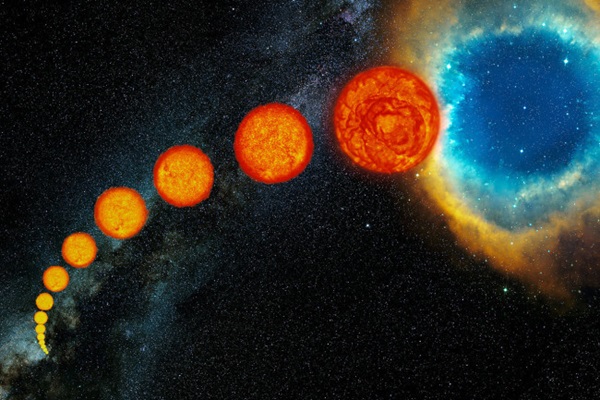The Sun’s death could mean new life in the outer solar system – Astronomy Magazine
The life cycle of the sun takes it from the life-giving star we know today into a swelling red giant and, eventually, a planetary nebula surrounding a tiny white dwarf.
ESO/S. Steinhöfel
Mercury
Throughout solar system history, the innermost planet has been baked by the Sun. But even today, Mercury still clings to some icy patches. As our star ages, it will vaporize those remaining volatiles before eventually vaporizing the entire planet in a slow-motion version of Star Wars’ Death Star.
Venus
Venus is sometimes called “Earth’s twin” because the neighboring worlds are so similar in size and composition. But Venus’ hellish surface shares little in common with Earth’s Goldilocks-perfect conditions. As the Sun expands, it will burn up Venus’ atmosphere. Then, it too will be consumed by the Sun.
Earth
While the Sun may have 5 billion years left before it runs out of fuel, life on Earth will likely be wiped out long before that happens. That’s because the Sun is actually already growing brighter. By some estimates, it could be as little as a billion years before the Sun’s radiation becomes too much for life on Earth to handle.
That might sound like a long time. But, in comparison, life has already existed on this planet for well over 3 billion years.
And, when the Sun does turn into a red giant, the Earth will also be vaporized — perhaps just a few million years after Mercury and Venus have been consumed. All the rocks and fossils and remains of the creatures that have lived here will be gobbled up by the Sun’s growing orb, wiping out any lingering trace of humanity’s existence on Earth.
But not all scientists agree with this interpretation. Some suspect the Sun will stop growing just before fully engulfing our planet. Other scientists have suggested schemes for moving Earth deeper into the solar system by slowly increasing its orbit. Thankfully, this debate is still purely academic for all of us alive today.
Mars
Even our young Sun’s radiation was too much for Mars to hold onto an atmosphere capable of protecting complex life. However, recent evidence has shown that Mars may still have water lurking just beneath its surface. Mars may escape the Sun’s actual reach — it’s at the borderline — but that water will likely all be gone by the time the red giant star takes over the inner solar system.
The gas giant planets
As our red giant Sun engulfs the inner planets, some of their material will likely get thrown deeper into the solar system, to be assimilated into the bodies of the gas giants.






